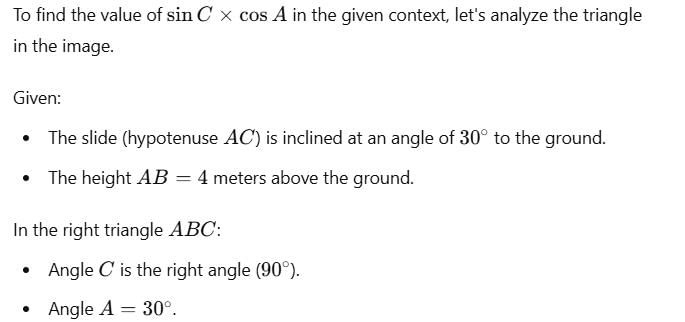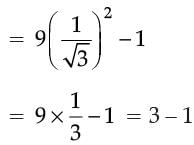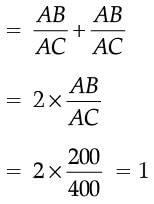Case Based Questions Test: Introduction to Trigonometry - Class 10 MCQ
10 Questions MCQ Test Mathematics (Maths) Class 10 - Case Based Questions Test: Introduction to Trigonometry
Read the following text and answer the following question on the basis of the same:
Authority wants to construct a slide in a city park for children. The slide was to be constructed for children below the age of 12 years. Authority prefers the top of the slide at a height of 4 m above the ground and inclined at an angle of 30° to the ground.

Q. In the given figure, the value of (sin C × cos A) is:

Read the following text and answer the following question on the basis of the same:
Authority wants to construct a slide in a city park for children. The slide was to be constructed for children below the age of 12 years. Authority prefers the top of the slide at a height of 4 m above the ground and inclined at an angle of 30° to the ground.
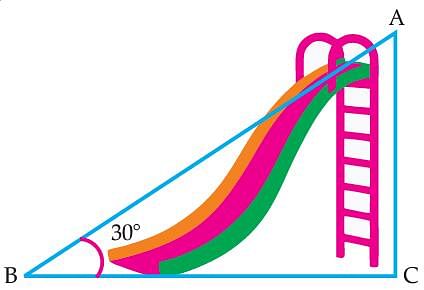
Q. The distance of AB is :

| 1 Crore+ students have signed up on EduRev. Have you? Download the App |
Read the following text and answer the following question on the basis of the same:
Authority wants to construct a slide in a city park for children. The slide was to be constructed for children below the age of 12 years. Authority prefers the top of the slide at a height of 4 m above the ground and inclined at an angle of 30° to the ground.
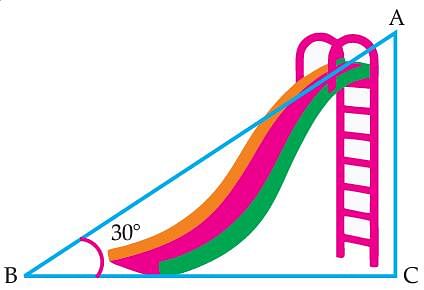
Q. In the given figure, if AB + BC = 25 cm and AC = 5 cm, then the value of BC is:

Read the following text and answer the following question on the basis of the same:
Authority wants to construct a slide in a city park for children. The slide was to be constructed for children below the age of 12 years. Authority prefers the top of the slide at a height of 4 m above the ground and inclined at an angle of 30° to the ground.
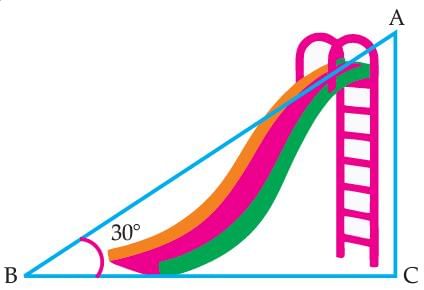
Q. The value of sin2 30° + cos2 60° is:
Read the following text and answer the following question on the basis of the same:
Authority wants to construct a slide in a city park for children. The slide was to be constructed for children below the age of 12 years. Authority prefers the top of the slide at a height of 4 m above the ground and inclined at an angle of 30° to the ground.

Q. If cos A = 1 / 2 , then the value of 12 cot2 A – 2 is:
Read the following text and answer the following question on the basis of the same:
'Skysails' is that genre of engineering science that uses extensive utilization of wind energy to move a vessel in the sea water. The sky sails technology allows the towing kite to gain a height of anything between 100 m to 300 m. The sailing kite is made in such a way that it can be raised to its proper elevation and then brought back with the help of a telescopic mast that enables the kite to be raised properly and effectively.

Q. If cos A = 1/ 2 , then the value of 9 cot2 A – 1 is:
Read the following text and answer the following question on the basis of the same:
'Skysails' is that genre of engineering science that uses extensive utilization of wind energy to move a vessel in the sea water. The sky sails technology allows the towing kite to gain a height of anything between 100 m to 300 m. The sailing kite is made in such a way that it can be raised to its proper elevation and then brought back with the help of a telescopic mast that enables the kite to be raised properly and effectively.
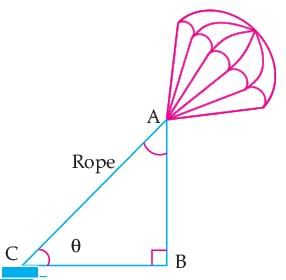
Q. The value of tan 30°. cot 60° is:
Read the following text and answer the following question on the basis of the same:
'Skysails' is that genre of engineering science that uses extensive utilization of wind energy to move a vessel in the sea water. The sky sails technology allows the towing kite to gain a height of anything between 100 m to 300 m. The sailing kite is made in such a way that it can be raised to its proper elevation and then brought back with the help of a telescopic mast that enables the kite to be raised properly and effectively. Where AB=200m and AC=400m
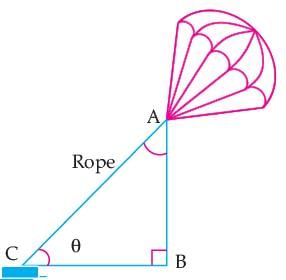
Q. In the given figure, the value of (sin C + cos A) is:
Read the following text and answer the following question on the basis of the same:
'Skysails' is that genre of engineering science that uses extensive utilization of wind energy to move a vessel in the sea water. The sky sails technology allows the towing kite to gain a height of anything between 100 m to 300 m. The sailing kite is made in such a way that it can be raised to its proper elevation and then brought back with the help of a telescopic mast that enables the kite to be raised properly and effectively.
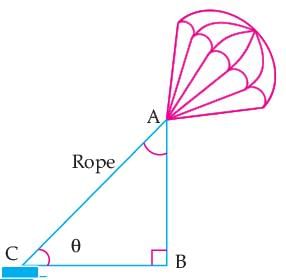
Q. In the given figure, if tan θ = cot (30° + θ), where θ and 30° + θ are acute angles, then the value of θ is:
Read the following text and answer the following question on the basis of the same:
'Skysails' is that genre of engineering science that uses extensive utilization of wind energy to move a vessel in the sea water. The sky sails technology allows the towing kite to gain a height of anything between 100 m to 300 m. The sailing kite is made in such a way that it can be raised to its proper elevation and then brought back with the help of a telescopic mast that enables the kite to be raised properly and effectively.
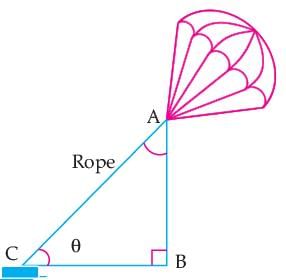
Q. What should be the length of the rope of the kite sail in order to pull the ship at the angle θ and be at a vertical height of 200 m?
|
126 videos|457 docs|75 tests
|
|
126 videos|457 docs|75 tests
|


